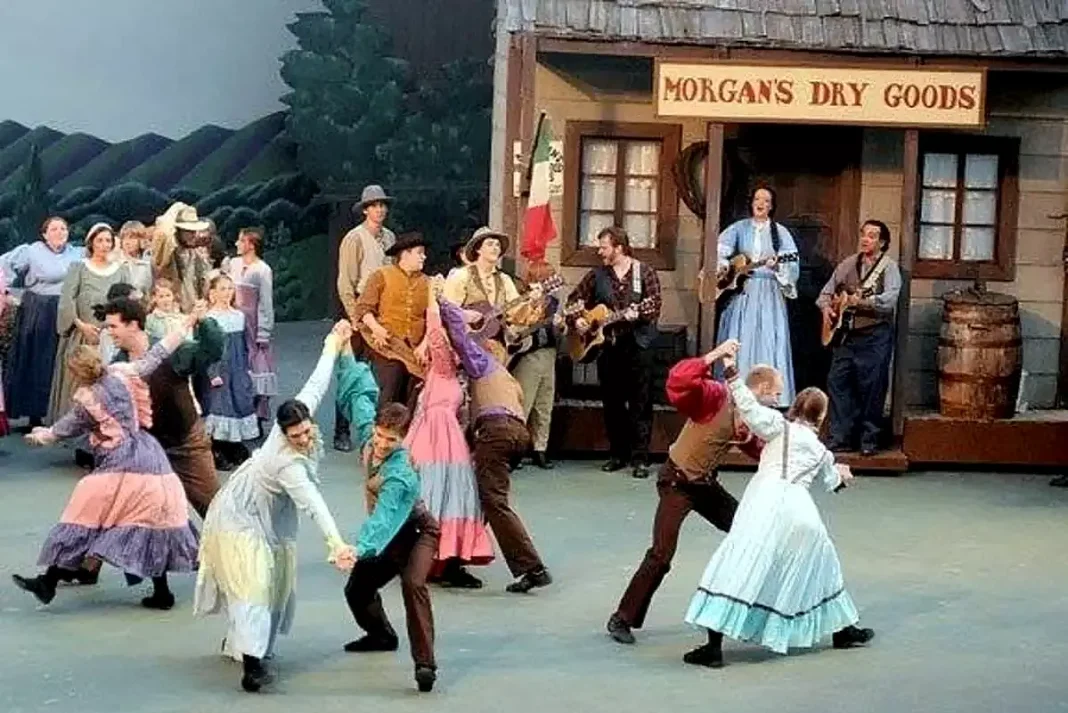COTTAGEVILLE, W.Va. — Tales of legendary lumberjack Paul Bunyon might seem far removed from West Virginia, but it turns out there's a long-established link between the folk hero of the American-Canadian border country and the Ohio Valley in West Virginia.
As to when Paul Bunyon left his mark in West Virginia, none now know, but by the 1970s, the tale of Paul Bunyan's brief association with West Virginia was codified by one of its greatest storytellers.
According to Jack Preble, the legendary lumberjack left the Old South for the Red River Country in the northwest, but he leaped over, rather than trudged through, the West Virginia hills, landing in the valley of the Ohio River, where his boot-print can still be seen.
The Boot-Shaped Bend, as Preble called it, is a remarkable feature. Midway along its course between Parkersburg and Huntington, the river follows an uncharacteristic wandering course that some say mimics the shape of a heeled boot.
"And there it can be seen today on any West Virginia state map," Preble wrote.
"The imprint of his boot forms the northern border of Mason and Jackson counties. From Murraysville to Lone Pine to Ravenswood, Letart, Graham's Station to Hartford City and Mason it runs where the river twists and turns like some prehistoric serpent as it faithfully follows the outline of Bunyon's boot for forty-odd convoluted miles."
Much of Preble's work is collected in "Land of Canaan: Plain Tales from the Mountains of West Virginia," published in 1971 and available on Amazon.
Of course, if you're not looking at a map or gazing down from the International Space Station, you'd miss the shape of Bunyon's boot, and you'd have to rely on being impressed, instead, in the manner that George Washington had been when he surveyed the river in 1770. Washington first named the bend the "Great Bend of the Ohio."
The father of our country was duly impressed by the fertile region around the bend. He studied it with appropriate care as he canoed south from Fort Pitt, now at Pittsburgh, into the territory of the lower Kanawha River and back.
Though at the very edge of the Virginian frontier, there was already European activity on the river among the low hills, and here, Washington famously observed some of the largest specimens of sycamore since recorded.
The Tale of the Boot-shaped Bend in the Ohio River
"After passing these Hills (which may run on the River near a Mile), there appears to be another pretty good Bottom on the East side. At this place, we met a Canoe going to the Illinoies with Sheep, and at this place also, that is, at the end of the Bottom from the Kanhawa, just as we came to the Hills, we met with a Sycamore abt. 60 yards from the River of a most extraordinary size, it measuring (3 feet from the Gd.) 45 feet round, lacking two Inches, and not 50 yards from it was another 31.4 round (3 feet from the Gd. also.)
"The 2d Bottom hinted at the other side (that is the one lying above the Bottom that reaches from the Kanhawa is that taken notice of the 30th Ulto., to lye in the shape of a Horse shoe, and must from its situation and quantity of level Ground be very valuable if the Land is but tolerably good.
"After passing this bottom and abt. a Mile of Hills, we entered the 3d Bottom and Incampd. This bottom reaches about half a Mile of the Rapid at the point of the Great Bent."
Impressed as Washington had been, according to Preble, not everyone was a fan of the boot-shaped bend.
"On the other hand, it was a nightmare for the old-time rivermen from captains and pilots down to common deckhands who cursed these same bewildering curlicues. Many poetically-minded rivermen occasionally were moved to express their feelings in rhyme, as this widely quoted jingle shows," he wrote:
Letart Falls and Graham Station, meanest places in creation.
Little Antiquity in between, the dangest places ever seen.
The boot-shaped bends in the river were not necessarily the problem. The falls at Letart were. Long before the river was locked and dammed, Letart Falls, named for a French fur trader, was a fearful place. No matter the boatman, running the rapid was fraught with peril.
He described the Letart Falls as "dreaded rapids that caused the waters to boil and make a grumbling, dull noise with such an eddy of great power that it sucked in logs and trees and everything within its attraction."
But the days of river hazards are long gone, and the boot-shaped bend and the river and its tributaries have now become a destination for kayaking and all outdoor recreation. Ravenswood, a historic river town just above the Great Bend, is renting kayaks aplenty to paddlers who are ready to explore the valley.
Outdoor Adventures await visitors to the Boot-shaped Bend
According to Jeremy Gorrell, owner of Rivertown Adventures, the region is transforming as more and more explorers discover the town as a destination.
"Every week now, we're renting kayaks, and folks are venturing out on Sandy Creek and across the river, bound for destinations such as historic Buffington Island," he said.
Gorrell has also opened Las Fajitas Mexican Grill in the Ravenswood Old Town National Historic District and a climbing gym to accommodate outdoor recreation enthusiasts further.
"The integrity of Ravenswood has returned," he said. "People are looking for just what we have here, and we're more than happy to welcome them."
Sign up for a FREE copy of West Virginia Explorer Magazine in your email twice weekly. Sign me up!




